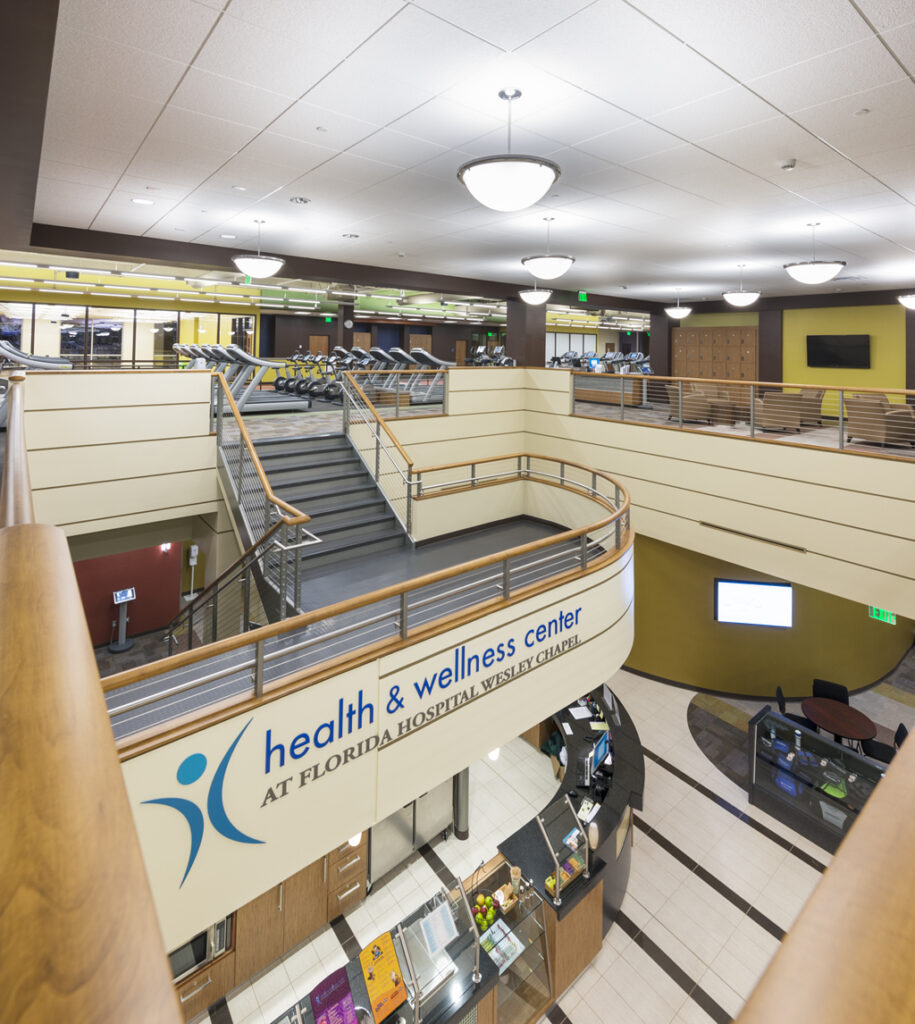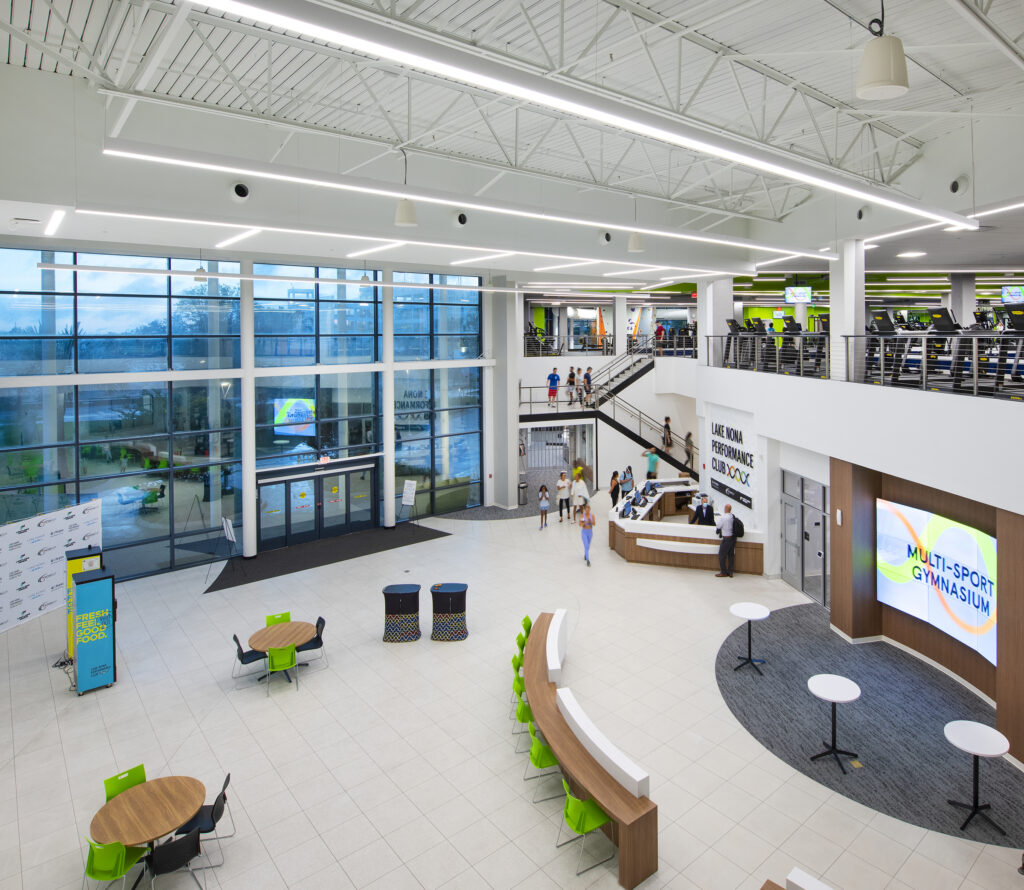
09 Dec Stairways Matter! 7 Ways to Make Stairways an Enriching Experience for your Members
Stairways Matter!
7 Ways to Make Stairways an Enriching Experience for your Members
by Hervey Lavoie
In the planning of new fitness centers and the renovation of existing facilities, stairways are often overlooked as an opportunity for competitive differentiation and enrichment of the member experience. Multi-story club facilities are a fact of life in both urban and suburban markets, so I am always surprised when I see high-quality, luxuriously appointed clubs with stairways that work well as fire-escapes but miss the mark as key design elements and styling opportunities.
Many aspects of stairway design are heavily regulated by building codes, which may be the reason that some multi-story high end clubs have been built with little creative attention to the stairways. Designers mistakenly assume that the fire exit stairways required by code can also do double duty as the primary means by which members circulate between levels. Unfortunately, this all-too-common assumption becomes a missed opportunity to turn the inconvenience of using a stair into a positive enhancement of the member experience.
A well-designed, conveniently located, visually open, comfortably sized, stairway is often referred to as a monumental stair and can become a signature feature of a club’s interior design and can actually be enjoyable to use. There are 7 attributes that make stairways a positive user experience.
- DESIGN EFFICIENCY: A monumental stair can be located central to the club’s primary patterns of horizontal This is important in the club business where efficient flow matters. Fire stairs, on the other hand, must generally be located near the exterior perimeter of the club and often require out-of-the-way circulation patterns and directional signage. Thus, a fire stair is not often well positioned to do double duty as an efficient convenience stair.
- TWO WAY TRAFFIC: A monumental stair can be generously dimensioned, visually open and unenclosed by walls and Fire stairs must be completely enclosed by fire-rated walls and doors. Because fire stairs are designed as one-way exit paths, they are usually not wide enough for the constant two-way traffic that occurs in a busy club environment.
- STATEMENT OF STYLE: A monumental stair can be beautifully finished with a wide range of quality materials, whereas a fire stair is strictly limited to non- combustible

- SALES BOOSTER: As an open stair, a monumental stairway can be positioned to overlook important interior club attractions, so it can be a dramatic “pause point” in the sales tour and provide an enticing overlook of a compelling array of “reasons to join”.
- SOCIAL STIMULANT & FITNESS ELEMENT: The visual openness and proper dimensioning of a monumental stair can actually turn it into an instrument of social interaction where users can pause on an oversized landing to chat or call out to friend who may be in activity areas adjacent to the When a stairway is designed to be user friendly, elevators do not get used as much; members get more exercise and wayfinding becomes a natural and intuitive reality.
- EASY & INVITING TO USE: Because they can be designed to less rigorous code standards, monumental stairways can be constructed at a more comfortable Fire stairs are usually set up at maximum allowable steepness to help minimize the cost of enclosure.
- READILY FOUND: Monumental stairways are best located in open, multi-story volumes where they can be easily seen, completely detached from confining walls and afforded panoramic views of surrounding attractions, both interior and If members need directional signage to find a stairway, it is not well located.
Stairs that are intended to serve the important life safety function of emergency fire exits are not going to be suitable for high-traffic, everyday use. Such stairways invariably disappoint when used for primary member circulation. A fire stair can be as narrow as 3 feet, 8 inches wide, which will not allow simultaneous two-way traffic to comfortably bypass each other. A properly sized monumental stair will be between 6 feet and 7 feet wide, which is quite sufficient for stress-free, two-way circulation.
In a newly built facility, a well-designed, smartly located monumental stair will more than pay for itself by allowing the required fire stairs to be sized per code minimums, properly secured for access control, finished to a basic utilitarian standard and located for optimum emergency exiting effectiveness.
In our experience, it is not at all uncommon for a club remodel project to include a substantial upgrade of the main stair or the installation of an entirely new monumental stair. In either case, the resulting improvements have delivered real value by enriching the member experience.


